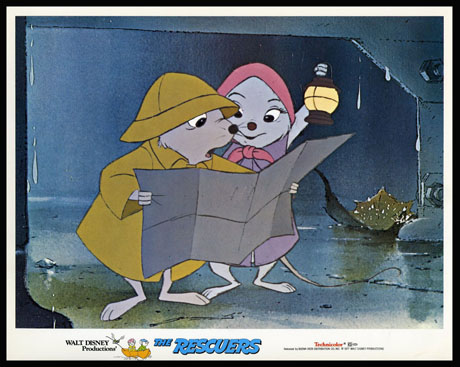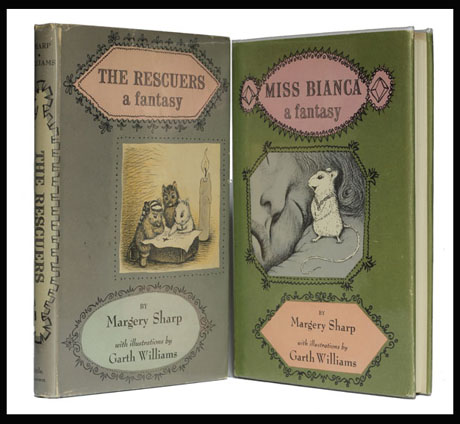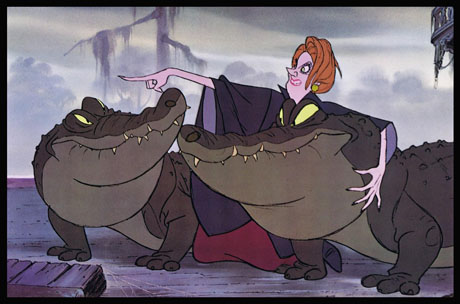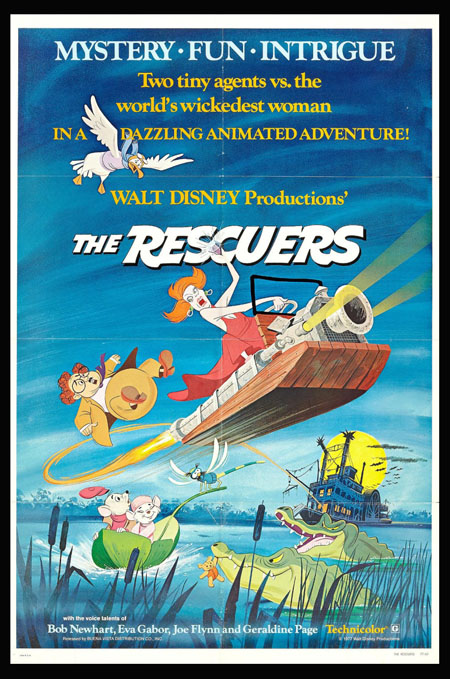
Forty years ago this summer, the landscape in Hollywood changed forever. A film was released that rocked the moviegoing experience for both the industry and audiences.
Oh sure, it may seem as if this is referring to George Lucas’ Star Wars, the flashpoint of summer blockbusters, but it also applies to another summer ’77 movie that celebrates forty years this season: Disney’s 23rd animated feature film The Rescuers.
While this underrated gem may not have received the attention that Star Wars received that summer (or even this summer during both films fortieth anniversary), “The Rescuers” does represent an important, pivotal moment in the history of Disney animation.

Based on a series of books by author Majorie Sharp, “The Rescuers” tells the tale of two mice, Bernard and Bianca, sent from the Rescue Aid Society in New York City to Devil’s Bayou in Louisiana, to rescue a young girl named Penny, from the clutches of the evil Madame Medusa.
The film came a little over a decade following Walt Disney’s death at a time when the animation studio struggled to keep its foothold in Hollywood.
“Post Walt” films like The Aristocats (1970) and Robin Hood (1973) did fine at the box office, but animation fans and critics noted that they both lacked the depth of the Studio’s classics.
Additionally, most of Walt’s “Nine Old Men” ( a nickname given to his top animators) who had brought life to such films as Snow White and Pinocchio, were eying retirement.
A decision was made to initiate an animation training program at the Studio, hire new animators fresh from art programs in Universities and Colleges and make The Rescuers a transition film, bridging two generations of Disney History.
Studying under the tutelage of Disney Legend (and a member of the “Nine”) Eric Larsen, the animators brought on board, such as Glen Keane, Ron Clements and Andy Gaskill would go on to chart the course for the animation renaissance of the 1990’s with films like The Little Mermaid (1989) and Aladdin (1992).
The Rescuers actually surfaced as a project at Disney long before these young animators arrived. In his book, “Disney Lost and Found,” animation historian Charles Solomon notes that the idea of a movie based on Sharp’s book “The Rescuers: A Fantasy,” was first fleshed out in 1962.

In this early version of the film, Bernard and Bianca, along with another mouse Nils, free a poet who has been trapped in an ominous location called “the Black Castle.”
Walt didn’t care for the where the story was going, so it languished at the Studio for over a decade, when “The Rescuers” resurfaced with a revamped story, in which Bernard and Bianca travel to Antarctica to rescue a Polar Bear named Louie.
This version of the film actually gained so much traction that voices were cast: comedienne Phyllis Diller was to be the voice of a villain named the Grand Dutchess and singer Louis Prima (so memorable as King Louie in 1967’s The Jungle Book) was cast as Louie the Bear.
In fact, the liner notes of a 1974 record album that Prima recorded for Disney “Let’s ‘Hear’ it for Robin Hood,” state:
“So great has been Louis’ popularity as King Louie, that Walt Disney Productions has arranged for him to add his talents and voice as ‘Louie the Bear’ in the new animated feature, ‘The Rescuers.'”
Conceptual art work of The Rescuers during its earliest stages are a fascinating look at what the film could have been. Veteran Disney artists Vance Gerry, Dave Michener and Ken Anderson created visuals of Louie and his”Zoo friends” that sparkle with personality.
This setting of Antarctica was eventually abandoned as many artists working on the film felt that the backdrop was too bleak for the colorful world of animation. Instead, the setting of the film was eventually changed to the “Black Bayou” of Louisiana and The Rescuers became a sequel/”shared universe” film- of sorts- to 1961’s 101 Dalmatians, as the one and only Cruella DeVille was cast by story artists as the film’s new villain.
In fact, in their book, “The Disney Villain,” legendary Disney animators, Frank Thomas and Ollie Johnston reveal some sketches that explored what Cruella would have looked like in the film, complete with an alligator stole and mod, 70’s sunglasses.
Abandoning this idea in favor of giving “The Rescuers” its own identity, the filmmakers went with a newly created villainess, Madame Medusa.

The voice for Madame Medusa was provided by noted and Academy Award winning actress Geraldine Page. Her vocal performance, filled with maniacal glee, was one of several departures in voice casting that sets “The Rescuers” apart from the Disney animated films that preceded it.
Gone is the “stunt casting” of films like 1967’s The Jungle Book and the animated films that followed, which utilized an all star cast of voices.
This is evident, not only in Page’s casting as Medusa, but with comedian Jim Jordan as the Albatross, Orville. Jordan, well known Fibber on the popular radio show “Fibber McGee and Molly,” hadn’t performed in a number years before The Rescuers (other than random sitcom appearances.
A more popular comedian would have seemed a more likely choice, but the artists behind “The Rescuers,” were looking for actors to help shape the characters’ personalities.
Disney also abandoned another trope in which the characters took on the appearance of the actor who was voicing them (think of Andy Devine’s eyebrows on Friar Tuck in Robin Hood).
Bernard the mouse looks nothing like Bob Newhart (probably the best known name in the cast) who provides the voice. However, Newhart’s pauses and stammers are perfect for Bernard’s timid personality.
In addition to this change in how voices were used, The Rescuers also departed from being the standard musical that audiences were used to. Pleasant songs like “Tomorrow is Another Day” and “Someone’s Waiting for You” (nominated for an Oscar) are played over the soundtrack to bridge scenes and heighten the emotion.
The scenes in The Rescuers also play out at a more relaxed, less frenetic pace, allowing for nice character development and personality animation. The scene in which Medusa, while dismissing Penny, removes her eyelashes (brought to life by legendary animator Milt Karl) is a wonder to behold.
Critics were impressed with the film’s charms when The Rescuers was released on June 22, 1977.
Vincent Canby of The New York Times called it “…a reminder of a kind of slickly cheerful, animated entertainment that has become all but extinct.”
While The Rescuers was up against Star Wars, it grossed an impressive $48 million at the box office, becoming Disney’s most successful animated feature to date (it even out grossed George Lucas’ space opera in France).
Six years later, in December of 1983, when Disney animation decided to bring Mickey Mouse back to the screen in Mickey’s Christmas Carol, they paired the featurette on a double bill with The Rescuers.
In 1990, when Disney animation was on the precipice of an animation renaissance, the cast of The Rescuers were chosen for the studios first full length animated sequel The Rescuers Down Under.
The Rescuers seemed ready to set the stage for a Golden Age of animation to start in the late ’70’s, but sadly, during production of the studio’s next film The Fox and the Hound, animator Don Bluth led a walk out of a number of animators to form their own studio (going on to make The Secret of Nimh in 1982). This crippled momentum at Disney.
Even with that, the legacy of The Rescuers and the new trail at Disney it quietly blazed are evident. This very modest, charming effort established a foundation for what was to come decades later.
So, this summer, as movie fans celebrate that galaxy “far, far away,” they should take time to recognize The Rescuers and how a renaissance of Disney animation truly did “start with a mouse.”

- An Eye for A Classic: The 60th Anniversary of “Mr. Magoo’s Christmas Carol” - December 22, 2022
- A Very Merry Mickey: The 70th Anniversary of “Pluto’s Christmas Tree” - December 19, 2022
- A Fine French Feline Film: The 60th Anniversary of “Gay Pur-ee” - December 12, 2022


 June 5th, 2017
June 5th, 2017  Michael Lyons
Michael Lyons  Posted in
Posted in  Tags:
Tags: 






